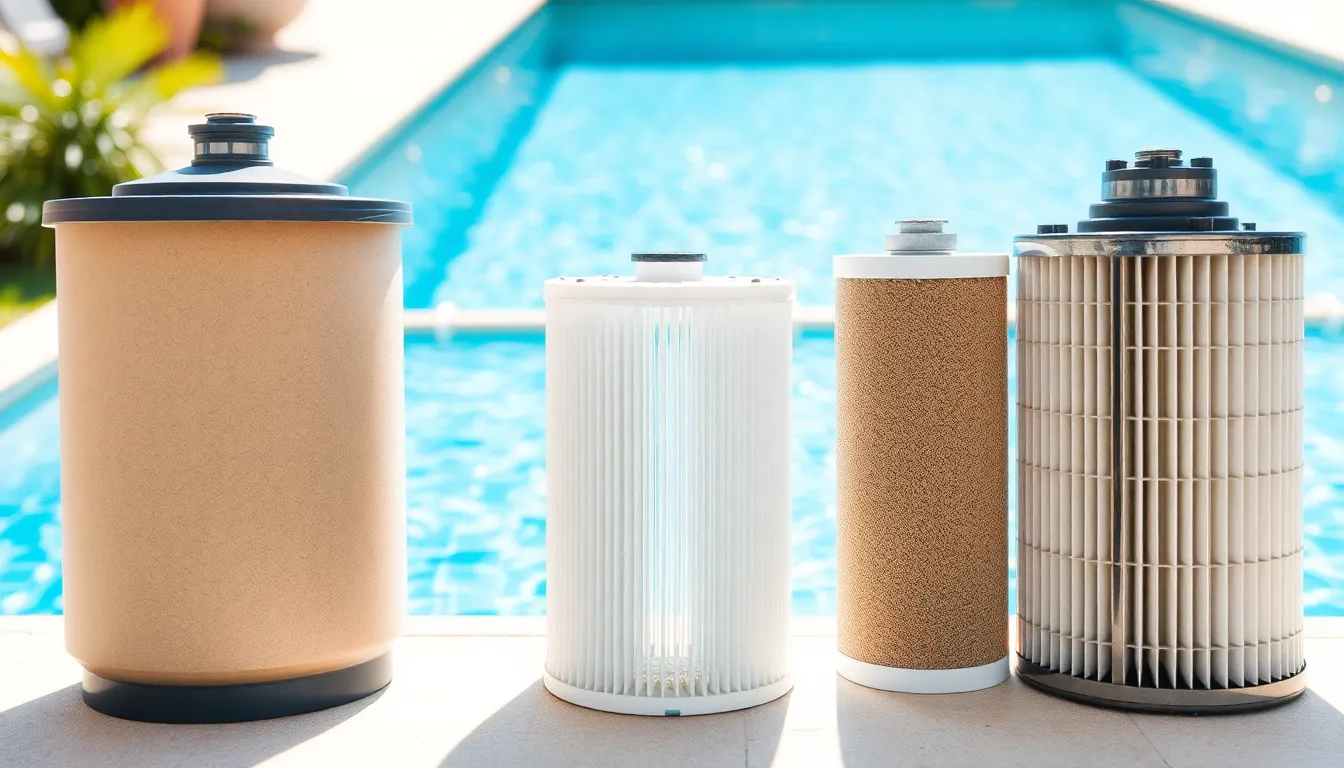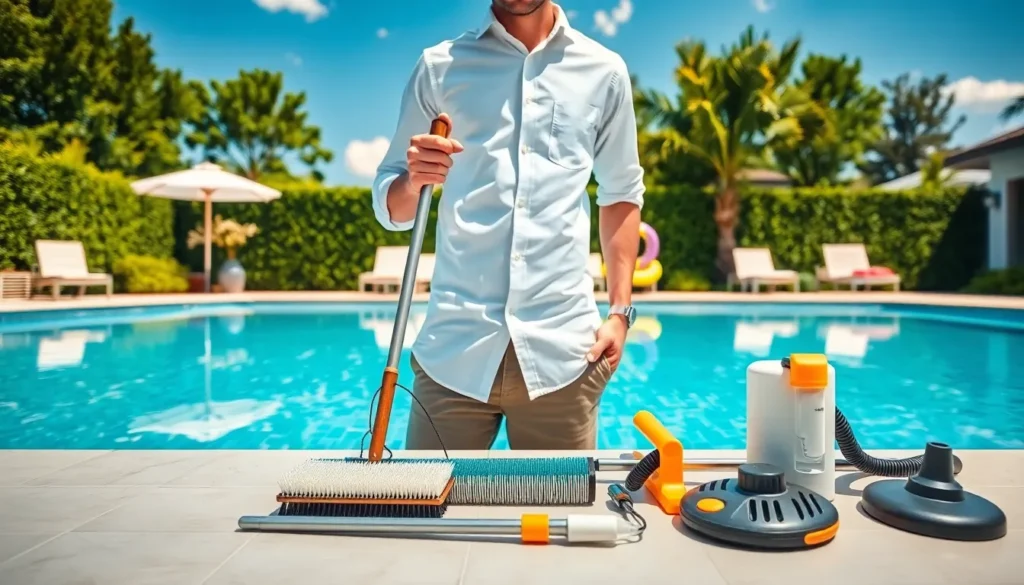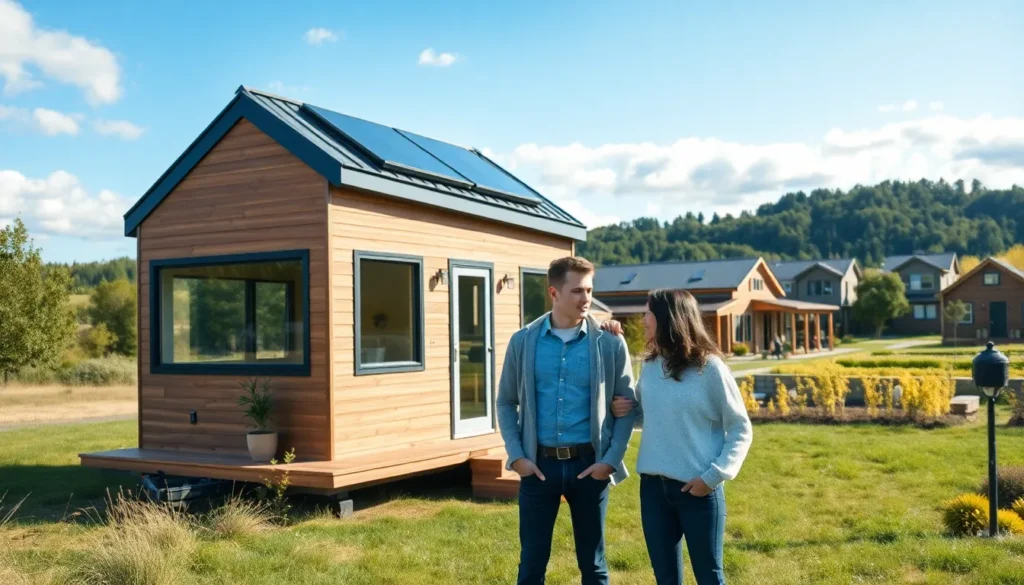When it comes to pool maintenance, cleaning filters often gets the cold shoulder. But let’s face it—nobody wants to swim in a soup of leaves and bugs. A clean filter isn’t just a luxury; it’s a necessity for sparkling water and a healthy swimming environment. Think of it as giving your pool a refreshing spa day—because even pools deserve a little pampering!
Table of Contents
ToggleImportance Of Cleaning Pool Filters
Cleaning pool filters plays a vital role in maintaining optimal water clarity. Regularly cleaned filters trap debris, keeping pollutants like leaves and dirt from circulating. Efficiency increases when filters function properly, reducing the need for additional chemical treatments.
Pool filters contribute to healthy water conditions, lowering the risk of harmful bacteria and algae growth. A clean filter extends its lifespan, saving money on replacements over time. Clean filtering systems also enhance water circulation, promoting even temperature distribution throughout the pool.
Maintenance should occur according to the manufacturer’s recommendations, typically every few weeks. Infrequent cleaning can cause pressure build-up, leading to pump strain and potential breakdowns. Additionally, clean filters minimize energy consumption, translating to lower utility costs.
Regular filter cleaning supports the overall enjoyment of the pool, ensuring comfortable swimming experiences. Keeping filters in check allows for quicker and easier maintenance tasks. By prioritizing filter hygiene, pool owners ensure a safe environment best for their families and guests.
Types Of Pool Filters

Various types of pool filters exist, each serving distinct functions. Understanding these filters helps maintain pool water quality efficiently.
Sand Filters
Sand filters utilize specially graded sand to trap debris. Water flows through the sand bed, allowing particles to get caught while clean water returns to the pool. This type requires backwashing every 4 to 6 weeks, depending on usage. Sand filters are low-maintenance and suitable for above-ground pools and in-ground pools alike. They effectively filter out large particles but may not be as efficient for smaller debris.
Cartridge Filters
Cartridge filters employ a replaceable cartridge to clean pool water. As water passes through the cartridge, dirt and particles get captured, resulting in clear water. Users should clean the cartridge every 4 to 6 weeks, which involves rinsing it with a hose. This type offers excellent filtration for smaller debris and requires less energy to operate than sand filters. They typically occupy less space, making them ideal for smaller pool setups.
Diatomaceous Earth Filters
Diatomaceous earth filters utilize a powder made from fossilized algae. This powder coats a grid inside the filter, creating a fine filtration system. Water flows through the grid, filtering out the tiniest contaminants that other types might miss. Maintenance involves adding more diatomaceous earth after backwashing, which should occur every 4 to 6 weeks. Known for their superior filtration, these filters are ideal for those seeking crystal-clear water. They tend to be more complex and may require more frequent maintenance.
Steps For Cleaning Pool Filters
Cleaning pool filters ensures optimal performance and clearer water. Follow these steps for an efficient cleaning process.
Preparation
Before starting, gather necessary supplies. He’ll need a bucket, hose, and cleaning brushes. Turn off the pool pump first to prevent any accidents. Additionally, ensure the area around the filter is clear for safe access. Review the manufacturer’s guidelines for specific instructions. These instructions often highlight the required steps and precautions relevant to the particular filter type.
Cleaning Process
Begin with removing the filter from its housing. For cartridge filters, gently twist and pull it out. Use a hose to rinse off any loose debris. Pay attention to the pleats, where dirt tends to accumulate. Sand filters require backwashing using a backwash valve for a few minutes until the water runs clear. Diatomaceous earth filters involve flushing out the old media and replacing it with new diatomaceous earth after backwashing. Complete this process every 4 to 6 weeks for optimal filtration.
Reassembly
Reassembling filters requires caution. Ensure the filter is completely dry before reinserting it. Position the filter back in its housing carefully. Connect any hoses or valves securely to avoid leaks. Turn on the pool pump and observe for proper operation. Check for pressure gauges to confirm that everything runs smoothly. Regularly inspecting these components enhances their longevity and efficiency.
Common Mistakes To Avoid
Neglecting regular maintenance often leads to diminished filter performance. Skipping cleaning intervals results in debris build-up that stresses the system. Many pool owners overlook the specific cleaning requirements for each filter type. Sand filters need backwashing while cartridge filters require rinsing every 4 to 6 weeks. Failing to follow these guidelines can compromise water clarity.
Another mistake involves using harsh chemicals during the cleaning process. Some substances damage filter media and reduce filter effectiveness. Utilizing manufacturer-recommended cleaning agents ensures optimal performance and prolongs filter life. Rinsing filters with high-pressure water can also cause damage. A gentle rinse allows for effective debris removal without harming essential components.
Improper reassembly of filters poses another common pitfall. Keeping filters dry and securely connected is crucial before restarting the pump. Loose connections can lead to leaks or reduced water circulation. Checking for any cracks or wear during the reassembly process helps avoid future issues.
Overlooking filter replacement schedules is also a mistake. Each filter type has a different lifespan, and failing to replace them timely can lead to inefficiencies. Paying attention to longevity and performance ensures continued effective filtration. Lastly, ignoring signs of malfunction, such as decreased water flow, can result in significant problems down the line. Observing these indicators facilitates timely intervention and maintains overall pool health.
Tips For Maintaining Pool Filters
Regular maintenance ensures optimal performance of pool filters, contributing significantly to water clarity and quality. Schedule cleanings according to the manufacturer’s recommendations. Typically, this occurs every few weeks to prevent pressure build-up.
Utilize proper cleaning methods tailored to each filter type. For sand filters, backwash every 4 to 6 weeks to remove trapped debris. Cartridge filters require rinsing during this maintenance cycle to maintain efficiency. Diatomaceous earth filters necessitate the addition of fresh diatomaceous earth post-backwashing to sustain fine filtration.
Keep the necessary supplies handy before starting the cleaning process. Gather items such as a bucket, hose, and appropriate brushes for effective cleaning. Ensure the pool pump is turned off to avoid accidents during maintenance.
Inspect filter components regularly for wear and tear. Check for any signs of damage or degradation, which could indicate a need for replacement. Timely intervention can prevent larger issues from developing, ensuring continued filter efficiency.
Watch for key indicators of filter performance. Decreased water flow often signifies clogs or filtration issues. Additionally, be aware that neglecting cleaning responsibilities can lead to system strain, reducing the filter’s lifespan.
Staying informed about each filter type’s unique characteristics enhances maintenance routines. Understanding specific requirements promotes effective cleaning, while improper handling can damage filter media. Avoid harsh chemicals and high-pressure rinsing techniques, as these can compromise essential components and lead to leaks.
Establishing a consistent maintenance schedule leads to a more enjoyable swimming experience and reduces long-term costs associated with repairs. Prioritizing filter upkeep safeguards pool health and maintains clarity.
Regularly cleaning pool filters is essential for maintaining a safe and enjoyable swimming environment. By adhering to a consistent maintenance schedule and understanding the specific needs of each filter type, pool owners can ensure optimal performance and water clarity. Neglecting this vital task can lead to increased energy costs and potential damage to the filtration system.
Investing time in proper filter maintenance not only enhances the pool’s aesthetic appeal but also promotes health and safety for all swimmers. With a few simple steps and the right approach, anyone can enjoy a sparkling clean pool all season long.









